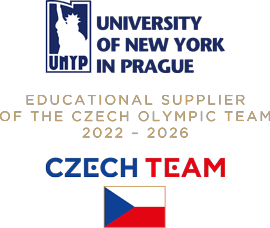Literacy matters: three simple steps for reading effectively

My expertise is in language and literacy. In the United States of America, I had the pleasure of working independently and collaboratively in teams on research projects that aided learning and development for learners to succeed academically. I research in the areas of reading and literacy, and I am interested in more opportunities and possibilities to collaborate with experienced researchers in these areas.
Literacy is at the heart of all learning. Students who are competent at writing clearly, and who fully understand the texts they read, open doors for themselves to acquire knowledge in math, literature, history, business, and science. Adults who cannot read and write well not only have few chances in succeeding academically and in the workplace, but also find that their personal development is hindered. As the contexts in which we read have broadened significantly and continue to change to include reading texts through innovative technologies, it is important that we help learners develop the literacy skills they need to maximize their learning if they are to become highly knowledgeable scholars and inspiring, compassionate leaders in the workplace. The country’s economy depends on high performance in the workplace, and so literacy is “no longer a luxury but an economic necessity” (Rand Reading Study Group, 2002, p.4.).
Interest in developing literacy in students has received increased attention recently in both research (Biancarosa & Snow, 2006; Dalton & Proctor, 2008; Leu, Kinzer, Coiro, & Cammac, 2004; Rand Reading Study Group, 2002) and government policy reports (Alliance for Excellent Education, 2011). For the past four decades, literacy research has been primarily grounded in the principles of cognitive psychology and has focused on identifying the strategies, skills, and knowledge that learners of all ages need. Such research has provided insights for instruction to assist less skilled readers in efficiently reading and comprehending the texts they read in schools. However, in recent years literacy research has additionally involved a shift toward highly collaborative, interdisciplinary research that includes diverse learners and considers knowledge from multiple academic disciplines.
For instance, longitudinal studies at leading universities have been conducted to measure the growth in skills of readers from diverse linguistic backgrounds. Significant progress has already been achieved in reading research, using knowledge from neuroscience to help us understand more about dyslexia in readers. Research has recently been conducted using neuroimaging tools (fMRI, EEG/ERP, and MEG) to understand how brain systems for reading compare between skilled readers and less skilled readers, in order to predict reading difficulties and detect differences in brain systems. The EEG-oriented research has tapped into deeper understanding of self-regulatory abilities in reading to learn to powerfully predict academic achievement and emotional well-being, among other things.
The good news is that these collaborations among literacy researchers and researchers from diverse academic disciplines are done in the service of society, and at the same time have the potential to powerfully inform educational practice. Based on literacy research results and my own experiences as a literacy scholar, researcher, and educator I would like to share below three steps that university students should consciously take to read study texts effectively:
1. Prediction. Before reading, the reader should consciously hypothesize what information will be presented in the text. Readers make predictions based on the title, pictures, headings, and diagrams in the text, and their own knowledge and personal experiences. Good readers use prediction as a way to connect existing knowledge to new information from the text.
2. Making connections. While reading, each reader should naturally make “text-to-self, text-to-text, text-to-world” connections in the brain. Readers make “text-to-self” connections when they relate information presented in the text to their own life experiences, “text-to-text” connections when they relate information in the text to information read previously in other texts, and “text-to-world” connections when they relate information presented in the text to world issues. Making these connections helps readers make deep sense of the text in a unique and personal way. Reader-generated responses to these connections are unique because each reader has unique background knowledge and life experiences.
3. Asking questions. Finally, while reading, each reader should ask questions about information in the text to relieve confusion and stay focused on reading. Readers can ask themselves questions such as “Is there anything in the text that surprises me?” and “Is there anything I am wondering about?” to gain a better understanding of the text. The reader who asks questions after reading the text is engaging in the act of reflecting, which likewise contributes to more successful recall of the information read.
One important thing to keep in mind is that these basic steps can be utilized while reading both electronic and printed texts, and can be helpful to anyone. Yet because students are uniquely different and all learn differently, some of them might need to apply additional steps to develop literacy skills. In the end, it is imperative that literacy is taught and researched because it empowers students in childhood and adulthood, even extending beyond to support their country’s economic growth.
Written by: Andrea Behalova
Related Articles
UNYP Chronicle Newsletter
The e-mail address you provide will be used only to send you the newsletter. Your privacy is important to us.
For more information download our UNYP Brochure.

Contacts
University of New York in Prague
Londýnská 41, 120 00 Praha
ID no: 25676598
Phone:
+420 224 221 261
![]() Skype
Skype
Email: unyp@unyp.cz







